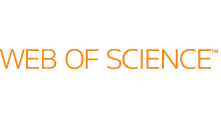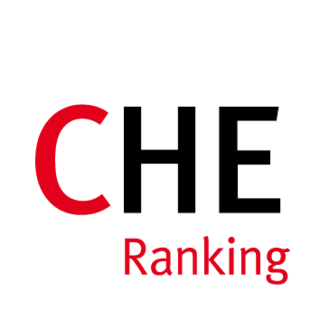College and university rankings order institutions in higher education based on factors that vary depending on the ranking. Some rankings evaluate institutions within a single country, while others assess institutions worldwide. Rankings are typically conducted by magazines, newspapers, websites, governments, or academics. In addition to ranking entire institutions, specific programs, departments, and schools can be ranked. Some rankings consider measures of wealth, excellence in research, selective admissions, and alumni success. Rankings may also consider various combinations of measures of specialization expertise, student options, award numbers, internationalization, graduate employment, industrial linkage, historical reputation and other criteria.
Three national rankings of universities in the United Kingdom are published annually – by The Complete University Guide, The Guardian and jointly by The Times and The Sunday Times. Rankings have also been produced in the past by The Daily Telegraph and Financial Times. UK Universities also rank highly in global university rankings with 8 UK Universities ranking in the top 100 of the three major global rankings - QS World University Rankings, Times Higher Education World University Rankings and Academic Ranking of World Universities.

The Academic Ranking of World Universities (ARWU), also known as the Shanghai Ranking, is one of the annual publications of world university rankings. The league table was originally compiled and issued by Shanghai Jiao Tong University in 2003, making it the first global university ranking with multifarious indicators.
The Institute for Scientific Information (ISI) was an academic publishing service, founded by Eugene Garfield in Philadelphia in 1956. ISI offered scientometric and bibliographic database services. Its specialty was citation indexing and analysis, a field pioneered by Garfield.
The impact factor (IF) or journal impact factor (JIF) of an academic journal is a scientometric index calculated by Clarivate that reflects the yearly mean number of citations of articles published in the last two years in a given journal, as indexed by Clarivate's Web of Science.
Consumer confidence is an economic indicator that measures the degree of optimism that consumers feel about the overall state of the economy and their personal financial situation. If the consumer has confidence in the immediate and near future economy and his/her personal finance, then the consumer will spend more than save.

The Web of Science is a paid-access platform that provides access to multiple databases that provide reference and citation data from academic journals, conference proceedings, and other documents in various academic disciplines. Until 1997, it was originally produced by the Institute for Scientific Information. It is currently owned by Clarivate.

The Times Higher Education World University Rankings, often referred to as the THE Rankings or just THE, is the annual publication of university rankings by the Times Higher Education magazine. The publisher had collaborated with Quacquarelli Symonds (QS) to publish the joint THE-QS World University Rankings from 2004 to 2009 before it turned to Thomson Reuters for a new ranking system from 2010 to 2013. In 2014, the magazine signed an agreement with Elsevier to provide it with the data used in compiling its annual rankings.
QS World University Rankings is a portfolio of comparative university rankings compiled by global higher education analyst Quacquarelli Symonds (QS). Its first and earliest edition was published in collaboration with Times Higher Education (THE) magazine as Times Higher Education–QS World University Rankings, inaugurated in 2004 to provide an independent source of comparative data about university performance. In 2009, the two organizations parted ways to produce independent university rankings, the QS World University Rankings and THE World University Rankings.
The SCImago Institutions Rankings (SIR) since 2009 has published its international ranking of worldwide research institutions, the SIR World Report. The SIR World Report is the work of the SCImago Research Group, a Spain-based research organization consist of members from the Spanish National Research Council (CSIC), University of Granada, Charles III University of Madrid, University of Alcalá, University of Extremadura and other education institutions in Spain.
College and university rankings in the United States order the best U.S. colleges and universities based on factors that vary depending on the ranking. Rankings are typically conducted by magazines, newspapers, websites, governments, or academics. In addition to ranking entire institutions, specific programs, departments, and schools can be ranked. Some rankings consider measures of wealth, excellence in research, selective admissions, and alumni success. There is also much debate about rankings' interpretation, accuracy, and usefulness.
Rankings of universities in Canada are typically published annually by a variety of nationally, and internationally based publications. Rankings of post-secondary institutions have most often been conducted by magazines, newspapers, websites, governments, or academia. Ranking are established to help inform potential applicants about universities in Canada based on a range of criteria, including student body characteristics, classes, faculty, finances, library, and reputation. Various rankings consider combinations of factors, including funding and endowment, research excellence and/or influence, specialization expertise, admissions, student options, award numbers, internationalization, graduate employment, industrial linkage, historical reputation and other criteria. Various rankings also evaluate universities based on research output.
The CWTS Leiden Ranking is an annual global university ranking based exclusively on bibliometric indicators. The rankings are compiled by the Centre for Science and Technology Studies at Leiden University in the Netherlands. The Clarivate Analytics bibliographic database Web of Science is used as the source of the publication and citation data.
The University Ranking by Academic Performance (URAP) is a university ranking developed by the Informatics Institute of Middle East Technical University. Since 2010, it has been publishing annual national and global college and university rankings for top 2000 institutions. The scientometrics measurement of URAP is based on data obtained from the Institute for Scientific Information via Web of Science and inCites. For global rankings, URAP employs indicators of research performance including the number of articles, citation, total documents, article impact total, citation impact total, and international collaboration. In addition to global rankings, URAP publishes regional rankings for universities in Turkey using additional indicators such as the number of students and faculty members obtained from Center of Measuring, Selection and Placement ÖSYM.
The Best Global Universities ranking by U.S. News & World Report is an annual ranking of world universities. On October 28, 2014, U.S. News, which began ranking American universities in 1983, published its inaugural global ranking, assessing 500 universities in 49 countries. That first installment of the Best Global Universities Ranking was published without prior announcement, with U.S. News later clarifying that the rankings of that year were a trial balloon for the publication's entrance into the global university rankings field. After pre-announcing the rankings of next year, in 2016, the periodical formalized the global university rankings as part of its regular annual programming. Having made official the ranking methodology, it disclosed that it is based on 10 different indicators that measure universities' academic performance and reputations. The ranking has since been revised and expanded to cover 1,500 institutions in 81 countries and now includes five regional and 28 subject rankings. Employing 13 indicators and based largely on data provided by Clarivate, the U.S. News global ranking is methodologically different from its ranking of American institutions; global universities are rated using factors such as research reputation, academic publications, and the number of highly cited papers.
Academic rankings of universities in Mexico are listings of universities and institutions of higher education in the country that has been sorted according to different criteria of evaluation. The ratings may be based on the "subjective quality perceived", in a certain combination of empirical statistics, bibliometric statistics or examinations by teachers, students or others. These classifications are often consulted by applicants to obtain a place at a university and choose one according to personal criteria.

Project 5-100 was a special government run program to develop major Russian universities. The program was launched by the Russian Ministry of Education and Science in 2013. It was aimed at improving the prestige of Russian higher education and bring at least five universities from among the project participants into the 100 best universities in the world according to the three most authoritative world rankings: Academic Ranking of World Universities (ARWU), Times Higher Education (THE), and Quacquarelli Symonds (QS) by 2020. However, this goal was never achieved.
This article presents an overview of university rankings in Pakistan. Within Pakistan, the Higher Education Commission (HEC) provides official rankings of higher education institutions (HEIs) nationally, based on a multitude of criteria. There are also various magazines, newspapers and international agencies/standards which provide rankings and analysis.

The CHE University Ranking is an annual ranking of German universities and colleges. It is a subject‐specific, multidimensional system aimed at providing information for students, with its main emphasis on teaching, rather than research. Introduced in 1998 and published by the Centre for Higher Education in cooperation with Die Zeit, it is the most comprehensive ranking of its kind in Germany.




